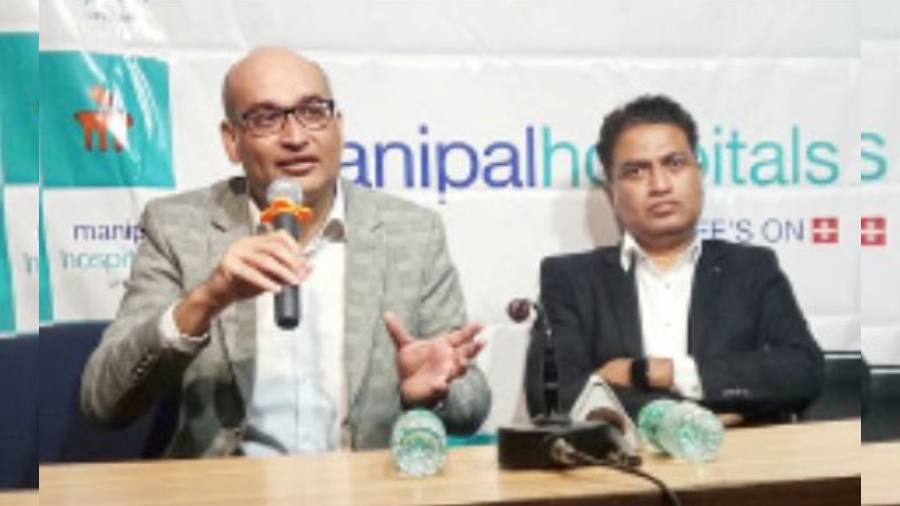Early diagnosis is key to the treatment of a type of blood cancer which originates from white blood cells, doctors said on Thursday. Two haematologists from a hospital in Bangalore were in town for an awareness programme on multiple myeloma, which accounts for 10 to 15 per cent of all blood cancers.
Multiple myeloma forms in a type of white blood cell called plasma cell. Cancerous plasma cells accumulate in the bone marrow and crowd out healthy blood cells. While the healthy cells produce helpful antibodies, the cancer cells produce abnormal proteins that can cause many complications.
“Multiple myeloma does not spread fast. It grows slowly. The main targets are blood, bones and kidney. Multiple myeloma cannot be completely cured. But early diagnosis can go a great deal in controlling the disease. The quality of life improves,” said Mallikarjun Kalashetty, consultant, haematology, haemato-oncology and bone marrow transplantation, Manipal Hospitals, Bangalore.
The average age of patients during the detection of the disease in India is around 55 to 60, said doctors. Persistent pain in the bones, fatigue, low blood count, frequent urination and a high protein count in urine are among the symptoms of multiple myeloma, they said.
“Liver, kidney, complete blood count and abnormal protein tests will detect multiple myeloma on 95 per cent of occasions. For confirmation, a bone-marrow test has to be done,” said Kalashetty. Kalshetty and Ashish Dixit, his colleague from the same department in the Bangalore hospital, spoke at length on the treatment of myeloma, which does not involve traditional chemotherapy. The treatment, which the doctors said evolved significantly over the past 10 years, involved three broad stages — initial therapy, bone-marrow transplant and post-transplant maintenance.
“Once the disease is diagnosed, the initial treatment is called induction therapy, which usually lasts between 12 and 16 weeks. The best part of the initial treatment is that it is usually OPD-based. Admission is needed only in complicated cases. Normally, a patient would just come to the hospital, take an injection and go home,” said Kalashetty.
“If the patient is fit, we then suggest a bone marrow transplant, after three to four months of initial treatment. Bone marrow transplant has a success rate of around 95 per cent. But even after the procedure, we can’t entirely uproot myeloma from inside a patient. But it can be even better controlled. When there is a relapse, we can deal with it. We have to push the relapse away so that the first remission period lasts longer,” he said.
Dixit said a transplant is usually carried out on patients under 70 years. “A bone-marrow transplant is advised for young patients. By young, we mean under 70 years. A bone-marrow transplant is a heavydose treatment. The chances of survival of patients who have done a bone-marrow transplant are more than that of patients who have not.
“If somebody diagnosed with multiple myeloma is 70-plus, his organs start getting compromised. The risk factor then increases. That is why we don’t suggest a transplant for them,” he said. In India, a bone-marrow transplant costs between Rs 6 lakh and Rs 8 lakh on average, the doctors said. Manipal Hospitals Bangalore has done over 400 bone marrow transplants since 2004, they said. “We don’t have the specific numbers but a fair section of our patients from outside Karnataka come from Bengal,” said Kalashetty.
